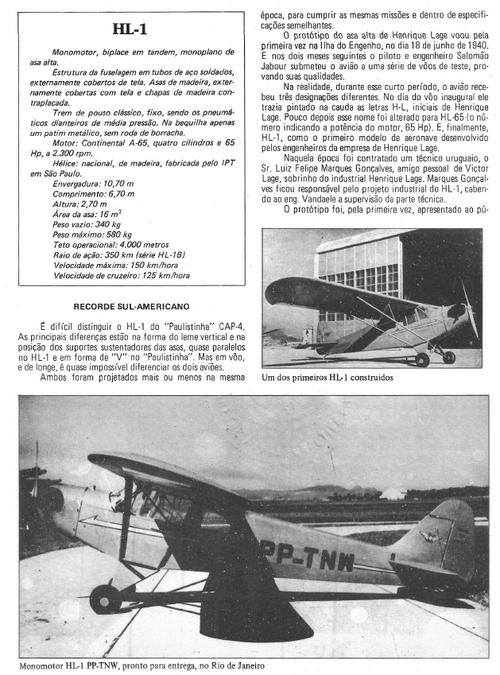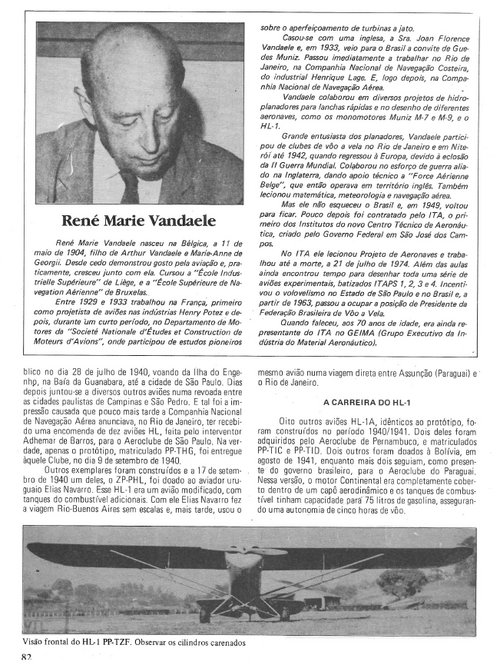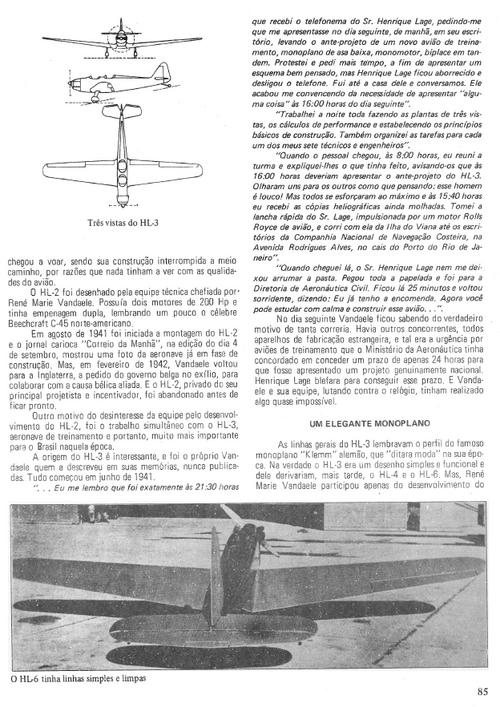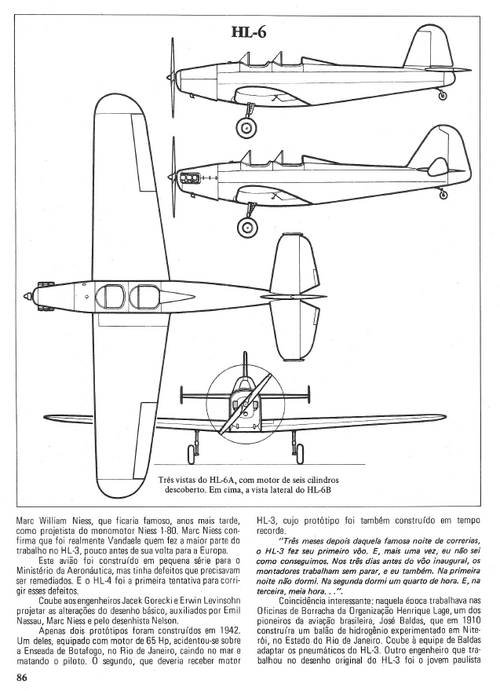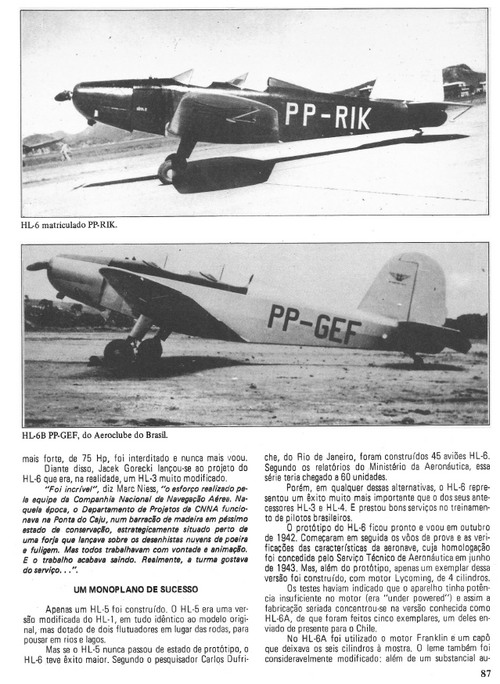- Joined
- 25 July 2007
- Messages
- 4,166
- Reaction score
- 3,829
Companhia Nacional de Navegação Aérea (CNNA)
The Companhia Nacional de Navegação Aérea (National Air Navigation Company) was created to operate some form of cargo/passenger service along with the manufacture of airframes. CNNA was established by the Brazilian industrialist Henrique Lage in 1935 but it seems that planning had begun at least two years earlier.
In 1933, Henrique Lage had commissioned a glider - the Avia - designed by Antonio Guedes Muniz and built on Ilha do Viana in the Baía da Guanabara. This 'planador' [1] was built with wood imported from Portugal which may have sparked the later interest in using 'national' woods. In any case, the Avia seems not have been designated and pre-dates the official establishment of CNNA.
The story behind CNNA design staff varies. In some versions told, Guedes Muniz recommended the hiring of Belgian engineer René Marie Vandaele, French designer Marcel del Carli, and other European and Brazilian staff. In other versions of the story, Henrique Lage did the hiring himself in 1933. I find the Guedes Muniz version more plausible ... but pick your favorite.
CNNA Aircraft Designations and Style
CNNA built some earlier Guedes Muniz designs but they retained their 'M' series numbers. With the first original CNNA design in 1940, the designation HL-1 was applied - standing for 'Henrique Lage n°1'. Alas, I am unclear on the definitive designation style - Brazilian sources use HL-1, HL1, and HL 1 ... sometimes within the same publication.
After producing 234 airframes, CNNA closed on 30 November 1948 due to lack of orders. However, the former CNNA engineering office persisted in their work under the new title of the Escritório Técnico de Aeronáutica (or Technical Office of Aeronautics). Oddly, the abbreviation is often given as ETAE. [2] Whether ETA or ETAE, the designs continued the 'HL' designation sequence - despite Henrique Lage having died back in July 1941. [3] The final design was the wooden HL-15 jet fighter concept. Some sources say that ETA/ETAE ceased operations in 1951, others that work on the large HL-10 transport continued at least until 1955.
_________________________________
[1] Planador is the Portuguese word for both glider and sailplane. I don't know which category the 1933 Avia would have fallen into.
[2] An exception is the Army University Press' Military Review (Vol 28, Issue 9) which, under Brazil's Air Industry lists the firm as "Escritório Técnico de Aeronáutica (ETA); private ownership; $300,000 production." Perhaps a simple explanation is that the ETAE acronym is meant to stand for Escritório Técnico de AEronáutica?
[3] One Escritório Técnico de Aeronáutica designation did pop up in hesham's reply #3. Apparantly an alternative designation for the HL-10 was ETAE-11. Why a different type number? Who known?
The Companhia Nacional de Navegação Aérea (National Air Navigation Company) was created to operate some form of cargo/passenger service along with the manufacture of airframes. CNNA was established by the Brazilian industrialist Henrique Lage in 1935 but it seems that planning had begun at least two years earlier.
In 1933, Henrique Lage had commissioned a glider - the Avia - designed by Antonio Guedes Muniz and built on Ilha do Viana in the Baía da Guanabara. This 'planador' [1] was built with wood imported from Portugal which may have sparked the later interest in using 'national' woods. In any case, the Avia seems not have been designated and pre-dates the official establishment of CNNA.
The story behind CNNA design staff varies. In some versions told, Guedes Muniz recommended the hiring of Belgian engineer René Marie Vandaele, French designer Marcel del Carli, and other European and Brazilian staff. In other versions of the story, Henrique Lage did the hiring himself in 1933. I find the Guedes Muniz version more plausible ... but pick your favorite.
CNNA Aircraft Designations and Style
CNNA built some earlier Guedes Muniz designs but they retained their 'M' series numbers. With the first original CNNA design in 1940, the designation HL-1 was applied - standing for 'Henrique Lage n°1'. Alas, I am unclear on the definitive designation style - Brazilian sources use HL-1, HL1, and HL 1 ... sometimes within the same publication.
After producing 234 airframes, CNNA closed on 30 November 1948 due to lack of orders. However, the former CNNA engineering office persisted in their work under the new title of the Escritório Técnico de Aeronáutica (or Technical Office of Aeronautics). Oddly, the abbreviation is often given as ETAE. [2] Whether ETA or ETAE, the designs continued the 'HL' designation sequence - despite Henrique Lage having died back in July 1941. [3] The final design was the wooden HL-15 jet fighter concept. Some sources say that ETA/ETAE ceased operations in 1951, others that work on the large HL-10 transport continued at least until 1955.
_________________________________
[1] Planador is the Portuguese word for both glider and sailplane. I don't know which category the 1933 Avia would have fallen into.
[2] An exception is the Army University Press' Military Review (Vol 28, Issue 9) which, under Brazil's Air Industry lists the firm as "Escritório Técnico de Aeronáutica (ETA); private ownership; $300,000 production." Perhaps a simple explanation is that the ETAE acronym is meant to stand for Escritório Técnico de AEronáutica?
[3] One Escritório Técnico de Aeronáutica designation did pop up in hesham's reply #3. Apparantly an alternative designation for the HL-10 was ETAE-11. Why a different type number? Who known?
Last edited:


